November 11 - 17, 2018: Issue 383
Filmed In Pittwater: A Sentimental Reprise + Some Extra Narrabeen Notes
SURF FILM.
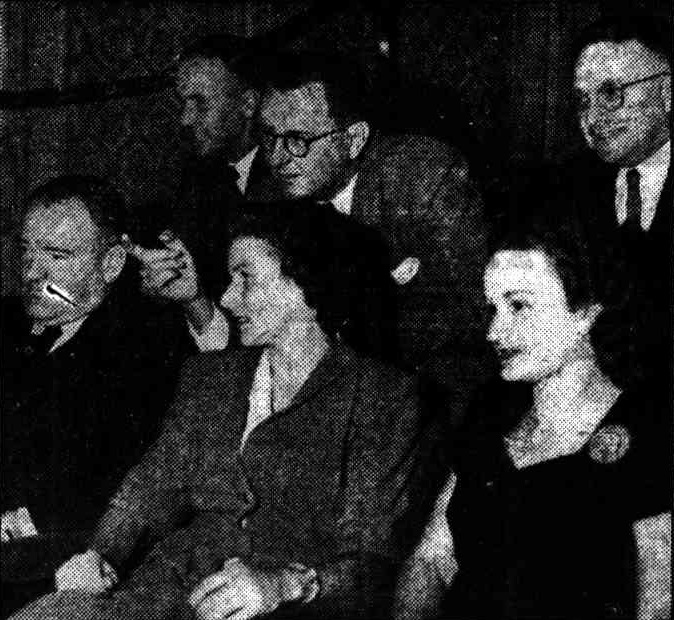
Surf Life Saving Association officials and semi-finalists in the Australian Surf Girl Contest at a special screening at the State Theatre today of a new Cinesound colored newsreel entitled "Call of the Surf." Watching the film are, back row: Messrs. Adrian Curlewis SLSA president, Ken G. Hall, Cinesound production manager, and George Millar, SLSA secretary. In front are: Mr. Cec. Mack, SLSA deputy president, Betty Jackson (Miss Coogee), and Hazel Kerr (Miss North Narrabeen).
No title (1948, March 12). The Sun (Sydney, NSW : 1910 - 1954), p. 3 (LATE FINAL EXTRA). Retrieved from http://nla.gov.au/nla.news-article229002328
"Call Of The Surf." 1932 Version
Although the 1948 and a 1932 version of "Call of the Surf" were filmed at Bondi, watchers will notice in the below earlier 'Call of the Surf' many other local beaches are among the screens, and the landscapes and skies, of times before many of us were born. An NFSA film. You may recognise Avalon, Bilgola and Newport, among others.
The beauty of Pittwater and its pristine offshore areas have long been utilised as backdrops for the creating of other worlds. Being able to see how yesterday’s landscapes and bays were, even their skies and seasons, is what gives every old or early Australian film, regardless of its artistic merits or lack of them, historical value to we not born or living then.
In 1896 locals watched a film titled Passengers Alighting from Ferry ‘Brighton’ at Manly. Sadly there is no known surviving copy of this film, one of many of our early films that have become 'lost'. This screening brought people together to watch a film for the first time as a larger audience though. Prior to this Thomas Edison’s 1894 Kinetoscope, for one set of eyes only, was how people saw 'moving pictures'.
Pittwater has many local actors who have worked hard and become well known and respected thespians in their fields. Most of them began in low-budget do it for free and sometimes, locally shot productions. Australian film itself began as a 'think on your feet' venture where budgets and success are not taken for granted and, in many cases, are no indication of popular or commercial success - large budget films are not always those that become 'classics' seen over and over, that 'stick' with a person.
These early film-making events provided employment for locals, whether on the sets or serving those who came to stay in local cottages and Hotels. One of the earliest is this short lived company, whose originators and actors, went on to other great things:
BUSHRANGERS AT NARRABEEN.
REALISM FOR PICTURE SHOWS.
" Residents of Narrabeen and the Pittwater district are enjoying the exciting spectacle in their midst of stuck-up mail coaches, galloping bushrangers, and troopers, beauteous heroines on horseback, and other paraphertrialia of the good old bushranging days of New South Wales, while the hills around are .'resounding with the rifle and revolver shots of outlaws and police engaged m mortal combat on the roads, and in the neighboring bush. Alas, it is all make-believe. It is nothing . more than the operations of the Australian ' Biograph Company, who are out on an expedition for film-making, and they have selected this beautiful and picturesque territory as a background for their pictures of old Australian life and incident.
A strong cast of leading actors and actresses are engaged In the strenuous work, including Miss Harrie Ireland, Mrs. and Miss Herbert, Messrs. Gaston Mervale, Godfrey Cass, and other well-known artists. Over 40 horses are employed in the operations, which are on an extensive scale. Mr. Clarke 13 in charge of the camera. The company work in, the district for a week.
Out in French's Forest, in the vicinity of Oxford Falls, the Spencer Biograph Company are also engaged in the same class of task. BUSHRANGING AT NARRABEEN. (1911, January 21). The Sun (Sydney, NSW : 1910 - 1954), p. 10 (FINAL SPORTING). Retrieved from http://nla.gov.au/nla.news-article221589110
In 1925 Henry Raymond Shirley and his troupe of actors stayed at Newport Hotel whilst in Pittwater filming. In that same year he released what was to be his most successful film The Mystery of a Hansom Cab, based on the (1889) book by Fergus Hume (1859-1932) which was an Australian Whodunit based in Melbourne. This funded The Sealed Room, released in 1926; unfortunately we could find no trace of this film to identify if Pittwater provides its scenic rooms.
On November 28th 1926, Norman Dawn, producer and director of For The Term of His Natural Life, brought his actors and film crew to Pittwater to film a famous sequence from this well known book. What is also interesting in the Sunday Times Report of ‘Shooting Scenes in Newport’ is that magical Scotland Island has managed to whisk herself northwards and even up the Hawkesbury;
Newport usually awakens to life in the week-ends, when motorists and pleasure-seekers from all around Sydney find a haven of rest in the peace and quiet of its picturesque surroundings, but when Norman Dawn, producer of 'For the Term of His Natural Life,' arrived there on Thursday with a gang of artists to enact further incidents in the story, 'the popular resort possessed a sudden mid-week interest.
News of the presence of the artists spread very quickly, and those who could free themselves sped out in cars to see what was being done by those who were brought out here to show us how movies are really made when the cash is up for spending. Hunting up locations is one man's job, and quite a responsibility, in a picture containing mostly outdoor locations. Newport- proved an ideal spot, scenically, for filming outdoor scenes.
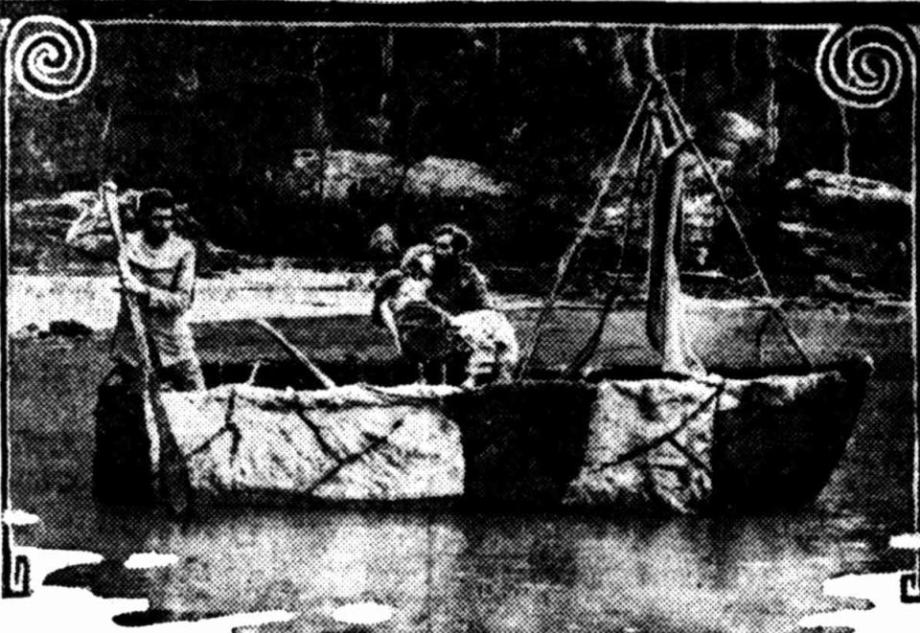
'FOR THE TERM OF HIS NATURAL LIFE.'Rains Dawes (George- Fisher) lifts Sylvia Victers (Eva Novak) into the Coracle, and orders Capt Frero (Dunstan Webb) to push out to sea. This scene was 'shot' at Newport on Friday.
A representative of the 'Sunday Times' went out on Friday morning to watch activities, and viewed the movements of the company with the interest of one who isn't accustomed to see convicts and pretty girls trailing on the heels of a man with a megaphone, and obeying his every wish. The scene to be 'shot' was the incident where Rufus Dawes, Sylvia Vickers, and Captain Frere put out to sea in the coracle. This necessitated the company setting out from Newport by launch, cruising up the waters of the Hawkesbury, and anchoring in one of the small bays opposite Scotland Island, on the north side. Here a clever little replica of the goat-skin boat described in the novel was lying on the sand on the beach. Wet weather made the company lose no time in 'shooting' this scene, where Rufus Dawes carries Sylvia Vickers in his arms out to the coracle, and orders his one-time superior (Capt. Frere) to push off the boat.
Six 'shots' taken in the falling rain, and Eva Novak suggested the orchestra strike up 'It Ain't Gonna Ruin No More.'
'It is all for the picture,' says Norman Dawn. 'For the stake of Art,' laughed Fisher, and the violinist wondered how much rain it took to ruin a perfectly good violin. The scene finished, the camera man got a few close-ups for publicity purposes, and the company boarded the launch again. Inside, fifteen of them seated themselves in picnic fashion. A large hamper was opened, and the hungry took sufficient nourishment to last until the hotel was reached for lunch.
It had been intended that the company should remain in Newport for four days, but Dawn, believing he could get better locations for other scenes, decided to return the same afternoon. Cars were rang for, and the company returned to the Bondi Studio, and work will proceed there again to-morrow, while the scout goes out to photograph new locations for Dawn's approval.
'I cannot always tell exactly how long I will be on any one location,' says Mr. Dawn, 'it all depends on the weather, and whether I am satisfied scenically with the surroundings. I thought I would be in Newport much longer, but I am satisfied there are other locations that will provide a change of scenery, and suit the purpose of the scenes equally well. The shots are not taken in the correct sequence in which they appear in the film.
A scene in the first and fifth reel may be taken in the same day and some of the scenes in the second reel may not be taken until the picture is utmost completed.
Technically, there is much to remember. For instance, if I have taken one scene on a sunny morning, I must be careful to see that the scene which links up with it is also taken on a bright day. "SHOOTING" PEOPLE AT NEWPORT—- WITH A MOVIE CAMERA (1926, October 17). Sunday Times (Sydney, NSW : 1895 - 1930), , p. 2. Retrieved from http://nla.gov.au/nla.news-article128120686
-while a crowd of onlookers comprehend the full significance of movie-making in and around Sydney- The scene to be shot was the incident where Rufus Dawes, Sylvia Vickers, and Captain Frere put out to sea in the coracle, which necessitated the company setting out from Newport by launch, cruising up the waters of the Hawkesbury, and anchoring in one of the small bays opposite Scotland Island on the north side. Here a clever little replica of the goat-skin boat described in the novel, was lying in the sand on the beach. Wet weather made the company lose no time in shooting this scene where Rufus Dawes carries Sylvia Vickers in his arms out to the coracle, and orders his one timé superior (Capt. Frere) to push off the boat Six shots taken in the falling rain, and Eva Novak suggested the orchestra to strike up "It Ain't Gonna Rain No More." "It is all for the picture,” says Norman Dawn, "For the sake of art," laughed Fisher, and the violinist wondered how much rain it takes to ruin a perfectly good violin. The scene finished, the camera man gets a few close-ups for publicity purposes, and the company board the launch again. Inside fifteen of them are- seated quite in picnic fashion. A large hamper is opened, and the hungry take temporary nourishment until the hotel is reached for lunch. Accordingly one can understand how motion pictures involve a big outlay. Transit alone must absorb quite a figure on the expense sheet, as well as the cost in loss of time and salaries debited against inclement weather. The company intended remaining in Newport for four days, but Dawn, believing he could get better locations for other scenes, decided to return the same afternoon. Cars were rung- for, and the company returned to the Bondi studio, and work will be proceeded there again to-morrow while the Scout goes out to photograph new locations for Dawn's approval.
"I cannot always tell exactly how long I will be on any location," says Mr. Dawn. 'It all depends on the weather, and whether I am satisfied scenically with the surroundings, I thought I would be In Newport much longer, but I am satisfied there are other locations that will provide a change of scenery, and suit the purpose of the scenes equally well..." AUSTRALIAN FILM. (1926, November 28). Sunday Times (Perth, WA : 1902 - 1954), p. 3. Retrieved from http://nla.gov.au/nla.news-article58312432
Scenes in Pittwater from: For the Term of His Natural Life 1927 (cave looking like Avalon’s St Michael’s Cave?); http://aso.gov.au/titles/features/the-term-of-his-natural-life/clip1/
In 1930 Australia’s first ‘talkie’ Showgirl’s Luck was created although not released until 1931. On 15th of March 1933, iconic Australian film-maker Charles Chauvel, debuted Tasmanian born actor Errol Flynn in the only Australian film he ever appeared in, apparently due to being impressed with Flynn’s survival of being shipwrecked in New Guinea. In the Wake of the Bounty was Chauvel’s prelude to filming Heritage. In 1933 was the year Mr Chauvel began dreaming up what would become the film Heritage in response to the Australian Government’s announcement, in pursuit of encouraging the Australian Film Industry, of offering a prize of £2,500 to the best Australian-made film. In October of 1934 he and wife Elsa (Elsie) were visitors to Pittwater.
Mr. and Mrs. Charles Chauvel have gone to Great Mackerel Beach, near Palm Beach, where they will occupy a cottage during the photographing of scenes for their new film, “Heritage." SOCIAL AND PERSONAL. (1934, October 20). The Sydney Morning Herald (NSW : 1842 - 1954), p. 11. Retrieved January from http://nla.gov.au/nla.news-article17119227
Heritage 1934 had long term Bayview resident John MacCallum and husband of Googie Withers as one of its players. 1934 was also a year when Australia was experiencing The Depression and locals were happy to be employed, if only for a few days:
"HERITAGE." Plans for Crowd Scenes. GOVERNOR PHILLIP'S LANDING.
More than a hundred men. most, of them unemployed, have been given work for to-day as "extras" in the Australian picture. "Heritage."' which Mr. Charles Chauvel is producing for Expeditionary Films. Ltd. Seventy of the men were selected in Sydney, and a large number in the district about Pittwater. To-day, all these will be transported to Great Mackerel Beach, where they are to take part in scenes depicting the landing of Governor Phillip.
The settings for Governor Phillip's camp have been faithfully reproduced from sketches prepared by Mr. Ray Lindsay from original sources in the Mitchell Library and elsewhere. Much difficulty has been experienced, however, in damming the small stream which flows from the hills to the beach, and which is Intended to represent the historic Tank Stream of Circular Quay. Several hundred bags, to be filled with sand for that purpose, were sent from Sydney yesterday. Hitherto, the tides have moved all the sandbags available at Pittwater.
It is hoped to make a start with the crowd scenes at Pittwater this morning. The film should be sufficiently advanced by the end of the week to be taken to Melbourne by Mr.Chauvel for "cutting." RE-ENACTING SCENES FROM THE FIRST SETTLEMENT. (1934, October 25). The Sydney Morning Herald (NSW : 1842 - 1954), p. 16. Retrieved from http://nla.gov.au/nla.news-article28021154
THAT enterprising couple, the Charles Chauvels, have found the quaintest little beach. In among the rocks and tea-tree, high above Mackerel Beach, near Pittwater, from which they will be able to keep an eye on the extras to be utilised in finishing their film, "Heritage," and, incidentally, the social-lights across the bay at Palm Beach. And what do you think they found there? Pasted on the front verandah was a large photograph of a group of those luscious Mack Sennett bathing girls, just too, too Mae Westy for words. It quite brought Charles' 'Hollywood days back to him when ho used to scamper round as one of Douglas Fairbanks' publicity men. Incidentally, this week Pittwater will resound to the commands of Governor Phillip's military, and the curses of his convict men. Nevertheless, Mrs. Chauvel thinks her little pill-box on the hill is the most restful spot since she left the Blue Lagoon in Tahiti. Catty Communications (1934, October 27). Smith's Weekly (Sydney, NSW : 1919 - 1950), p. 21. Retrieved from http://nla.gov.au/nla.news-article235490112
In 1937, Tall Timbers, which has as its opening scenes boardriders at Palm Beach and was from a story by one time Whale Beach resident Frank Hurley, was released. Mr Hurley took a job as a cameraman with Cinesound during the work scarce Depression years. This was a silent film, despite the advances in cinema technology.
Despite a lack of accessible Australian Films, many were made during the 1940’s, 50’s and 60’s, sometimes on a wing and a prayer, but all capturing a developing sense of what is the essential Australian Spirit that lead, by the 1970’s, to what is termed ‘okerism’. The 1979 film Palm Beach filmed in, well, Palm Beach, had a cast that included Steve Bisley as your ocker and Bryan Brown as a surfboard seeking character, it’s worth taking a look at the short extracts available on ASO for the views of Palm Beach Dunes as they were in then. See: Palm Beach 1979;
http://aso.gov.au/titles/features/palm-beach/clip3/
1979 was also the year Tim was released, filmed mostly at Barrenjoey in one of the old Customs Cottages. In 1978 Narrabeen Lake played host to the film Newsfront and was cunningly disguised at the Maitland Floods of
Television also brought Pittwater to our smaller screens. Pittwater locations featuring as the fictional world of Summer Bay has brought many a visitor into our area solely to find these locations. Every second week, whilst strolling along, someone either from here or overseas stops a staffer and asks them to point the way to Summer Bay, usually with a few youngsters in the back, clearly excited.
IN 1968 Sir Robert Helpmann featured in the ABC’s ‘Contrabandits, a Pittwater production’; HELPMANN A "BADDY" “CONTRABANDITS," ABC-TV's smuggling drama series, off to a good start with its 1968 season, could become Australia's first seriesto attract famous overseas guest stars for prestige appearances.
Starting the trend is world-famous ballet dancer and actor Sir Robert Helpmann, who plays a sinister role in "In For A Penny," to be telecast soon.
It was filmed largely at a fantastic mansion built by an Australian millionaire at Palm Beach, N.S.W.
A helicopter, private plane, a seaplane, a speedboat, and luxury cars - one once used by Princess Soraya - are all used. Even the Royal Australian Navy weighed in with its newest vessel, HMAS Archer, a fast patrol boat, which manoeuvred round Pittwater as directed by walkie-talkie.
- NAN MUSGROVE HELPMANN A "BADDY". (1968, September 11). The Australian Women's Weekly (1933 - 1982), p. 16. Retrieved from http://nla.gov.au/nla.news-article46186189
Australian masterpiece, The Year of Living Dangerously (1982) has Pittwater disguised too; Bilgola and Church Point specifically ( a local film man tells us this occurred as Peter Weir found the conditions in the Philippines, and death threats made to himself and Mel Gibson, where they were filming, too dangerous to cast and crew.) A Pittwater Online News staff member, living at Bilgola beach at the time of filming remembers having trouble walking home as residents were directed to not be there; the roads had been covered with sand. An offshore film gentleman also recalls his part of our world being similarly ‘disguised’.
Successive decades have also kept for all time parts of a more ‘modern’ Pittwater that has faded. Warriewood’s Drive In Theatre, gone for a little while now, was the ‘studio lot’ for 1991’s Fatal Bond which includes brother of Mel, Donal Gibson. See; Fatal Bond 1991; http://aso.gov.au/titles/features/fatal-bond/clip2/
Lantana (2001) has also Pittwater and Broken Bay sites as part of its truer blood. Although considered quite modern, eleven years have passed since this film’s release and a lot has changed around here in that time. More buildings, more people. What hasn’t changed is what draws people here, our green spaces and the way they lend themselves to creating real ‘environment’ in any scenes that require this. Who knows how many "Wow!"s we and our home grounds will look to those who watch these a hundred years from now…
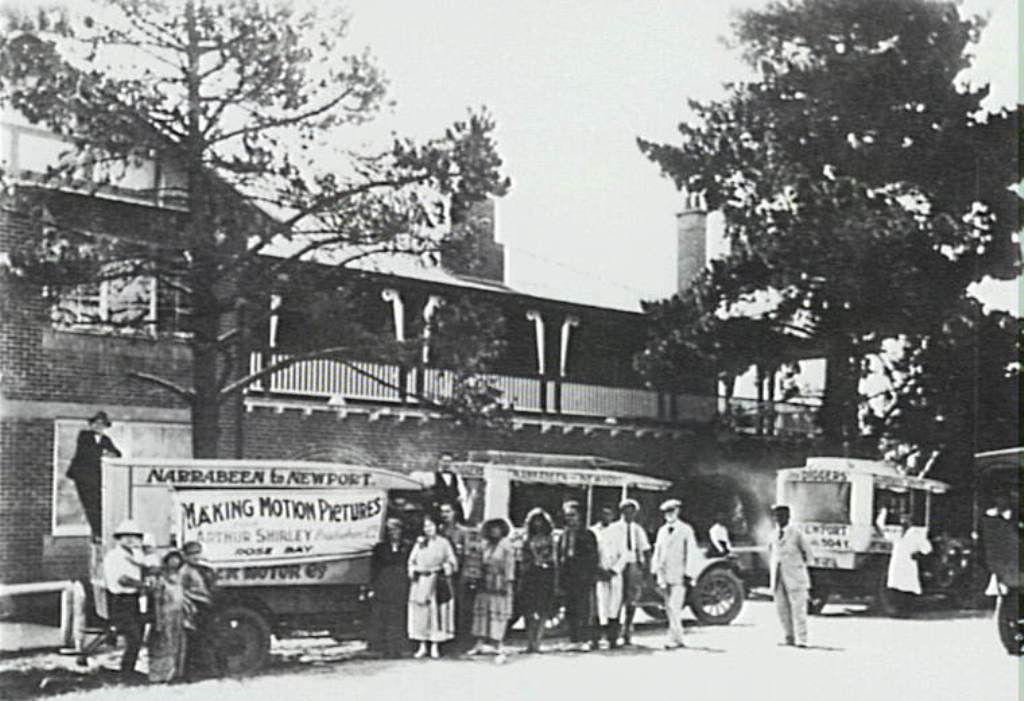
Film crew and actors in front of Newport Hotel standing beside 3 Narrabeen to Newport buses. Circa 1925, Image No. New 009A. Courtesy of Mona Vale Library Images.
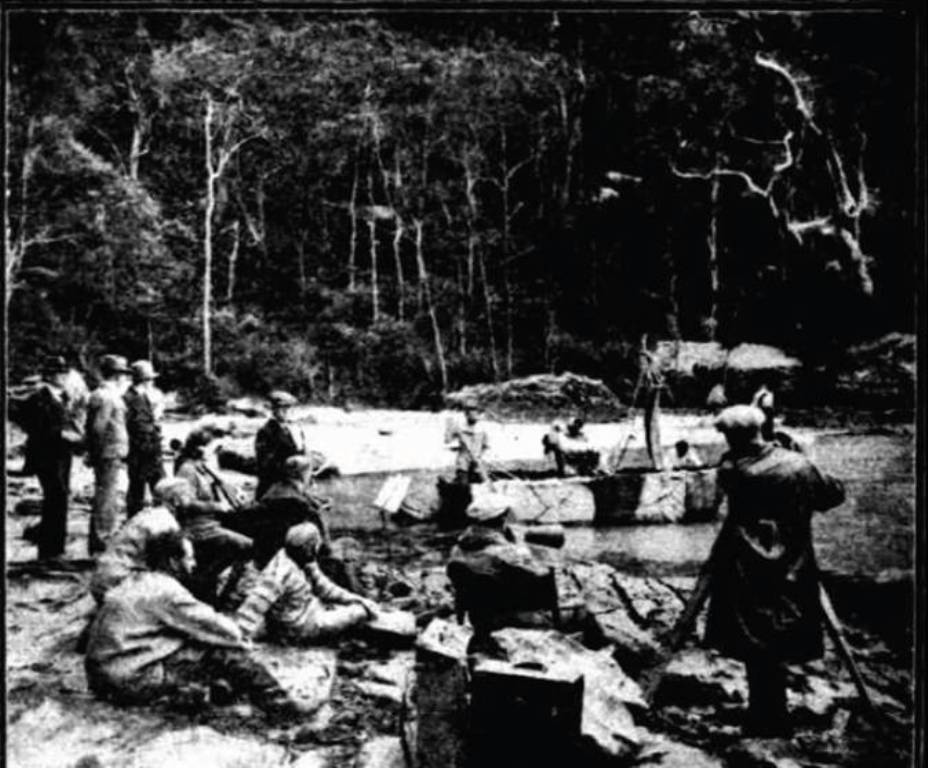
How a movie scene is "shot." This is the scene where Rufus Dawes lifts Sylvia Vickers into the goatskin boat. Producer Norman Dawn is seen seated with megaphone. Camera-man Len. H. Boos is on his right, and an orchestra, to inspire the players into the right mood, is on the left. AUSTRALIAN FILM. (1926, November 28). Sunday Times (Perth, WA : 1902 - 1954), p. 3. Retrieved from http://nla.gov.au/nla.news-article58312432
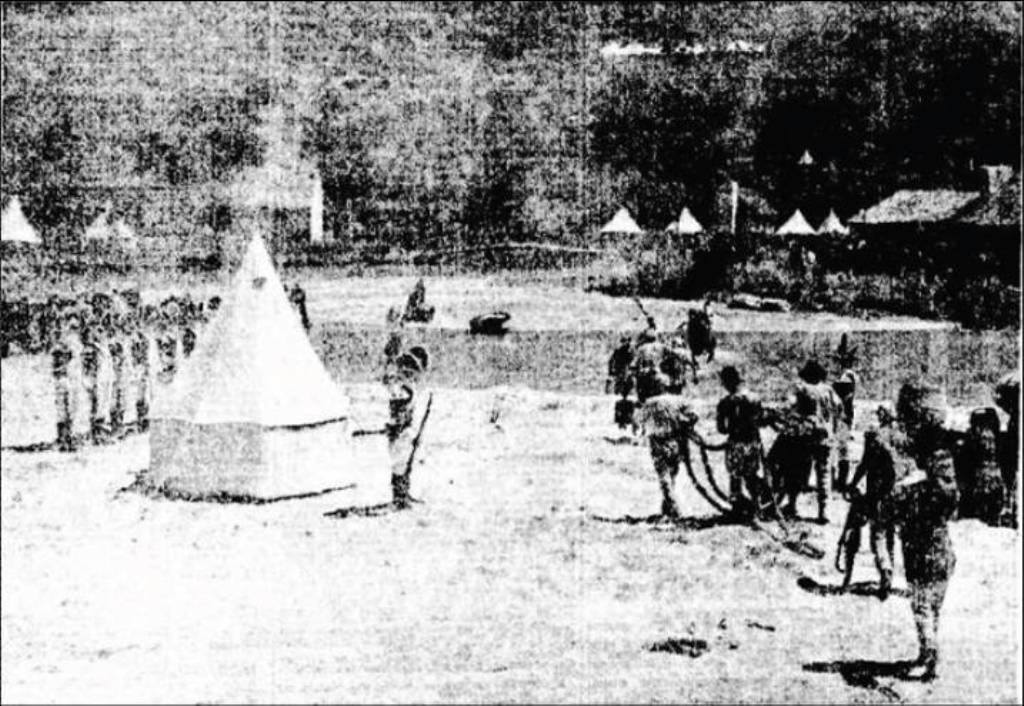
Photograph: RE-ENACTING SCENES FROM THE FIRST SETTLEMENT. (1934, October 25). The Sydney Morning Herald (NSW : 1842 - 1954), p. 16. Retrieved from http://nla.gov.au/nla.news-article28021154
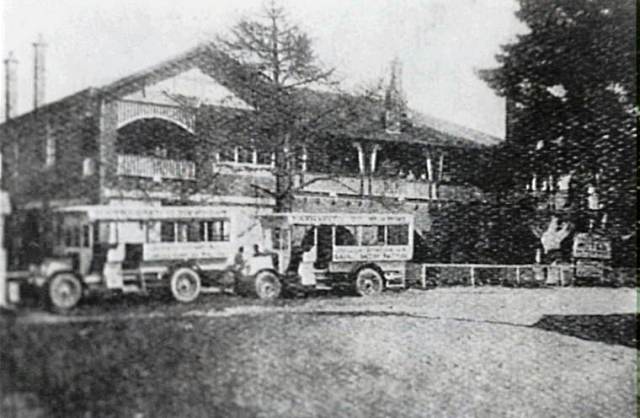
Above: Film crew and actors in front of Newport Hotel, Circa. 1925. Image No: NEW 009, Courtesy of Mona Vale Library Images
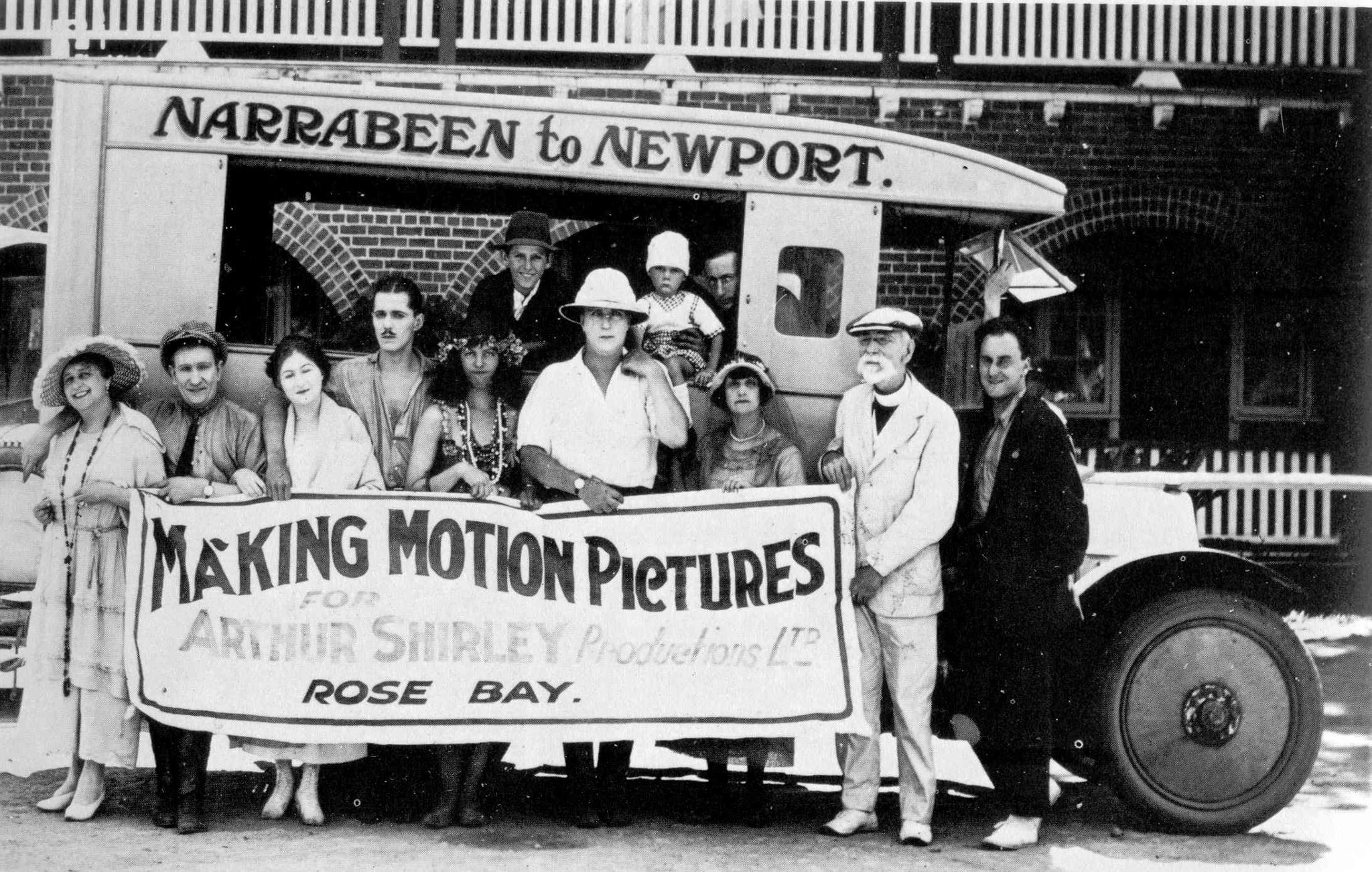
Film crew and actors in front of Newport Hotel in front of Narrabeen to Newport bus. Circa 1925 - Arthur Shirley is in pith hat.
Author: Hume, Fergus, 1859-1932
Publisher: Chicago, Rand, McNally
An Australian Whodunit based in Melbourne
Not Filmed In Pittwater But Part Of Manly Beach History And Heritage
Below: The Sentimental Bloke (1919)
Director: Raymond Longford
Producer: Raymond Longford
Production Company: Southern Cross Feature Film Company
The film is based on C.J. Dennis' 1915 Australian poem The Songs of a Sentimental Bloke, a favourite of many WWI Australian soldiers. The film was produce by a South Australian company, The Southern Cross Feature film Co, and shot in New South Wales. Most of the exteriors were filmed in the Sydney suburbs of Woolloomooloo, Manly Beach, Bondi and The Royal Botanical Gardens, Sydney. Interiors were shot at Wonderland City in Bondi. The text on the inter-titles (designed by 'Lottie Lyell') was taken directly from Dennis' poem.
Raymond Longford and Lottie Lyell, the writers/directors/stars were the most successful film partnership in Australia at the time. This film broke all existing box office records after debuting on October 4th, 1919 at Melbourne Town Hall in Victoria.
This version comes from a second generation VHS copy from a U-Matic video tape distributed by the New South Wales Department of Education in the early 1980s.
The negative of this film was rediscovered in the archives of George Eastman House (mislabled "The Sentimental Blonde"). The copyright restored edition premiered in 2004. There is no musical accompaniment on this video. It is completely silent.
LITERATURE.
PUBLICATIONS RECEIVED. THE SENTIMENTAL BLOKE.
"The Songs of a Sentimental Bloke," by C.J. Dennis (Angus and Robertson, Sydney).—Gathered together in a well printed, cleverly illustrated, and pleasant to handle little volume, Mr. C. J. Dennis's " Songs," most of which appeared originally in the "Bulletin," will be welcomed by all who take an interest in Australian verse. Like Lowell in "The Biglow Papers," Mr. Dennis clothes his thoughts in dialect, and he shows that the raiment loses nothing from its homely texture and its unacademical cut. Australian slang—the strange dialect of the streets and the byways where the lessons of the school are disremembered—is his medium of expression. The humour of the "Sentimental Bloke" has an exquisite quality, its sentiment a tenderness, and its philosophy a soundness which compel attention, even when the strange "lingo" puzzles or tends to repel. Those, however, who respond to the high impulses, the straight sayings, the patriotic fervour, and the keen edge of the satire of Lowell's dialect verse will find much to admire and appreciate in Mr. Dennis's lines. His hero in a sense is a brand snatched from the burning—a Melbourne "tough" transformed into a man by the love of a good woman. With the sentimental bloke to see Doreen, his type of a good woman, was To love her. And love but her for ever. His philosophy is really that of Burns: To make a happy fireside clime To weans and wife— That's the true pathos and sublime Of human life. There is genuine poetry in Mr. Dennis's verses, and a sensitive appreciation of the beautiful. There are veins of gold running through many of his lines. His quaint description of the eternal battle between Night and Day, in the terms of the prize ring, contains some striking imagery. Vanquished gloriously by the radiant day, night, when the conqueror weakens, "creeps stealthily to gain the ring," and this is how Mr. Dennis pictures the closing scene : All faint an' groggy grows the beaten Day ; 'E staggers drunkenly about the ring ; An owl 'oots jeerin'ly across the way, An' bats come out to mock the fallin' King. Now, with a jolt, Night spreads 'im on the floor, An' all the west grows ruddy wiv 'is gore. One quotation may be given to show Mr. Dennis's wholesome philosophy. It is in the admirable verses, "The Mooch o' Life" : An' ever it 'as taught me, day be day The one same lesson in the same ole way— "Look fer yer profits in the 'earts o' friends, Fer 'atin' never paid no dividends." Life's wot yeh makes it, an' the bloke 'oo tries To grab the shinin' stars from out the skies Goes crook on life, an' calls the world a cheat, An' tramples on the daisies at his feet. The volume has a comradely "Fore- word" by Henry Lawson. LITERATURE. (1915, November 6). The Queenslander (Brisbane, Qld. : 1866 - 1939), p. 4. Retrieved from http://nla.gov.au/nla.news-article22302614
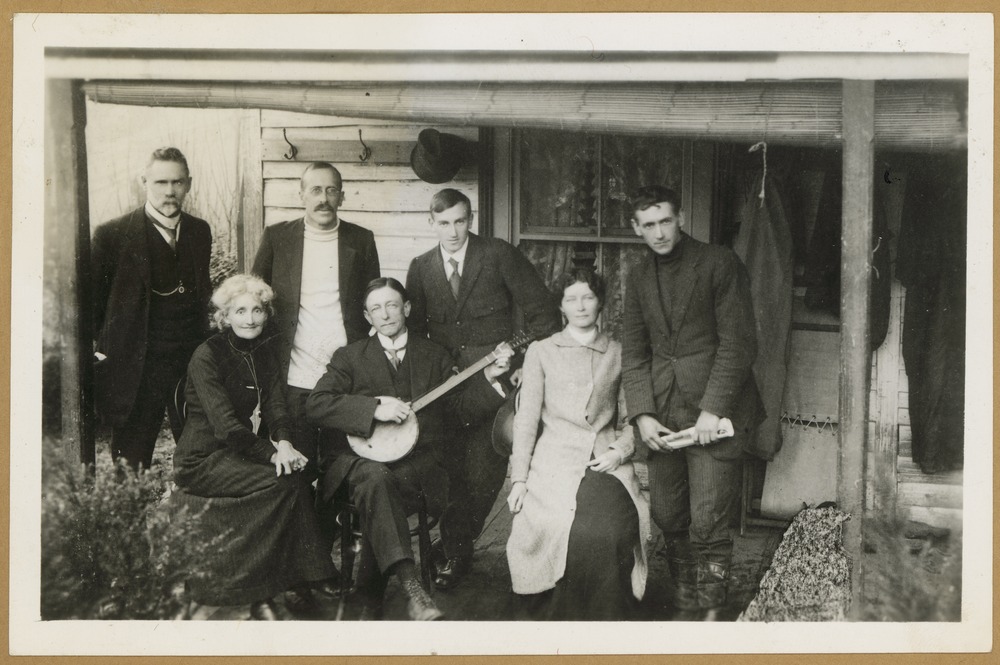
C. J. Dennis seated on porch of weatherboard house, holding a banjo, two women sitting beside him, older woman on the left, four men standing behind him. The man at the far left is John Garibaldi Roberts. Standing second from left is R. H. Croll. [ca. 1890-ca. 1900]. Courtesy State Library of Victoria.
The film is released:
ARTHUR TAUCHERT AND LOTTIE LYELL IN "THE SENTIMENTAL BLOKE" Theatre Royal; commencing October 18.
"THE SENTIMENTAL BLOKE" The filming of "The Sentimental Bloke" has been responsible for the development of two players who should in the near future be prominent figures in the Australian picture world. They are Arthur Tauchert, who appears' 'as the "Bloke," and Lottie Lyell as Doreen. Mr. Tauchert had very little film experience before being selected for this picture, but Miss Lyell has been associated with Australian productions right from the first. Concerning the picture, C. J. Dennis, author of "The Sentimental Bloke," remarks, "They were very solid doubts. Indeed, that I took along with me to the private screening of the picture. I was expecting, at best, a burlesque; at worst, a fiasco. I came away believing In miracles. The fidelity with which the written story has been converted Into what may be termed a visual narrative Is amazing to me. The difficulties that I had foreseen have been overcome admirably, and turned i Into picture triumphs. No liberties have been taken with the theme, and the easy expedient of vulgar burlesque has been entirely avoided." ."The Sentimental Bloke" will be presented at the Theatre Royal next Saturday, under the direction of E. J. Carroll. "THE MOVING ROW OF MAGIC SHADOW SHAPES" (1919, October 12). The Sun (Sydney, NSW : 1910 - 1954), p. 20. Retrieved from http://nla.gov.au/nla.news-article222291268
Sydney debut:
"THE SENTIMENTAL BLOKE"
The filming of "The Sentimental Bloke" has been responsible for tho development of two players who should in the near future be prominent figures in the Australian picture world. They are Arthur Tauchert, who appears as the "Bloke," and Lottie Lyell as Doreen. Mr. Tauchert had very little film experience before being selected for this picture, but Miss Lyell has been associated with Australian productions right from the first.
Concerning the picture, C. J. Dennis, author of "The Sentimental Bloke," remarks, "They were very solid doubts. Indeed, that I took along with me to the private screening of the picture. I was expecting, at best, a burlesque; at worst, a fiasco. I came away believing In miracles. The fidelity with which the written story has been converted Into what may be termed a visual narrative is amazing to me. The difficulties that I had forseen have been overcome admirably, and turned it Into picture triumphs. No liberties have been taken with the theme, and the easy expedient of vulgar burlesque has been entirely avoided." .
"The Sentimental Bloke" will be presented at the Theatre Royal next Saturday, under the direction of E. J. Carroll.
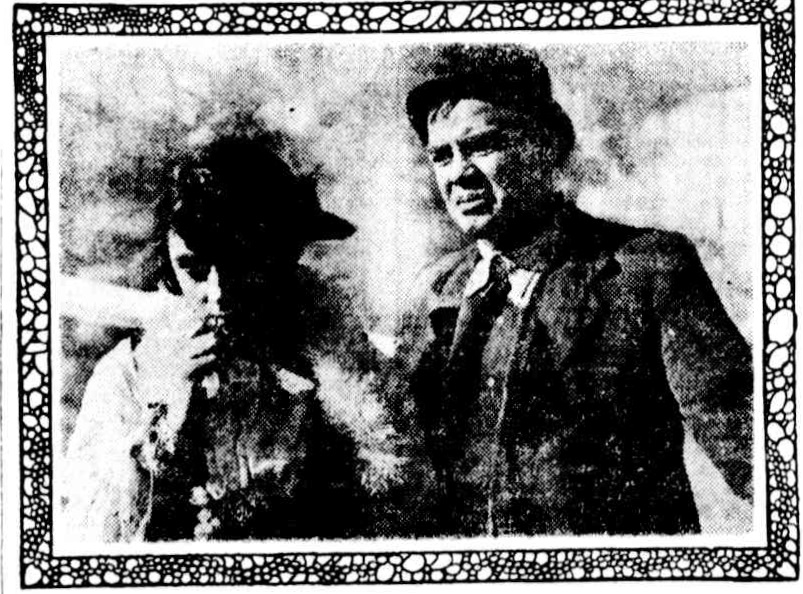
ARTHUR TAUCHERT AND LOTTIE LYELL IN "THE SENTIMENTAL BLOKE" Theatre Royal; commencing October 18.
"THE MOVING ROW OF MAGIC SHADOW SHAPES" (1919, October 12). The Sun (Sydney, NSW : 1910 - 1954), p. 20. Retrieved from http://nla.gov.au/nla.news-article222291268
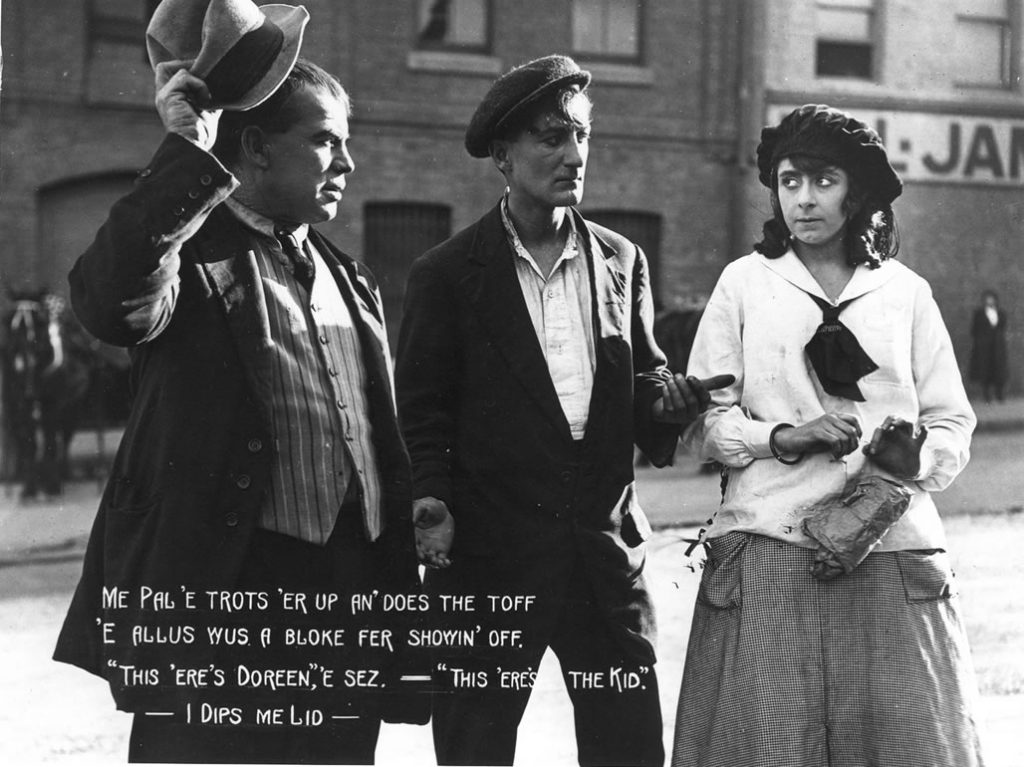
'THE SENTIMENTAL BLOKE.' STIRRING RECEPTION AT THE ROYAL. In C. J. Dennis's "The Sentimental Bloke," the London coster has been reborn in Australia, a rough diamond, but none the less a diamond. He is a lovable fellow, this "Sentimental Bloke," the more so because, he is so very human. Not always able to resist temptation, particularly on account of his popularity with his "pals," his regeneration by Doreen— an equally beautiful character— suffers temporary lapses. They are only temporary, because 'Bill' possesses a decent soul. When he broke his word to Doreen his objection was typified in the soliloquy, 'I've crooled me pitch, me souls in pawn.'
The great lesson Dennis drives home is that behind the motley of frocked coat or frayed working garb, the true spirit of chivalry was equally to be found. This sentiment was convincing in poem form, but as a screen study, with living types to illustrate the text, the moral was even more vivid. The poem has attained world-wide success, and the picture version of local origin, is bound to repeat that pleasant history. Already in Melbourne, it has beaten all records, which is pleasant telling for it proves the ability of Australia to present cinematograph films of equal merit to other countries. Mr. E. J. Carroll under whose direction the picture presented at the Theatre Royal on Saturday, is to be commended for his far-sightedness in selecting it. The Southern Cross Feature Film Company, Limited, deserves commendation for 'The Sentimental Bloke,' and the producer, Raymond Longford, and the cinematographer, Arthur Higgins, have constructed an excellent screen subject which will appeal to people of all countries where sentiment and the simplicity of earnest working folk, are appreciated.
"The Sentimental Bloke" made its bow to Adelaide audiences at the Theatre Royal matinee, and was cordially received; and in the evening hundreds of patrons had to postpone their visit. Every available space was crowded, and no film has had a better reception. The prophet has, at least, found honour in his own country. Not a point was missed, and the continuous shafts of humour kept the audience in merry mood; but a fine discrimination was shown when brief interludes of pathos claimed a sympathetic thought. His Excellency the Governor (Sir Henry Galway) attended by the (Private Secretary (Mr. Leigh Winser), was among the audience. There was a significant text, above the proscenium "The dawn of a new Australia is breaking for Australian pictures," and the evening's success affirmed this. The stage was picturesquely draped and decked with palms for the dual demands of cinematography and musical programmes. The programme commenced with a brilliant overture, 'Australia First, by a special orchestra conducted by Mr. E. Rawlins. This was followed by an industrial picture, 'The Timber Idustry in Australia' (specially taken by Mr. Bert Ives, cinematographer to the Commonwealth Government). The magnificent forests were graphically shown, and the fine old trees furnished some wonderful illustrations of workmanship in the heart of the romantic bush. To cut 1 000, 000, 000 super feet of timber was a fair task, and necessitated the employment of strong horses, Steam power, and gravitation. The whole picture was a great eye-opener upon the possibility of Australian industries, and an equal eye-opener t upon the locally made films to advertise local resources. There could be no abler publicity campaigner.
A short musical programme followed, when Mr. Oswald Rippon of St. Paul's Cathedral, Melbourne, contributed the boIos 'O nfeht of stars and splendour' (Thompson) and 'Ta donne e mobile' (Rigoletta), with musicianly feeling, and was recalled. Mdlle Irma Caron provided an excellent violin and vocal number, adapted from 'Philomela (the Nightingale). Her dramatic and vocal work Drought a rousing encore, when she contributed 'Waltz song' (Mattel), and a selection from 'The Belle of New York.'
The behaviour of a section of the crowd in the gallery at the beginning of Mdlle. Caron's songs drew a graceful but none the less caustic reprimand from the artist. It was regrettable that this should have been necessary in a city famed for its culture. Mdile. Caron and Mr. Rippon presented the duet from 'II Trovatore,' 'The Miserere' scene, which was given an ovation. The orchestra played ballet music from 'Silvia' (Debes) most charmingly, and then 'The Sentimental Bloke' concluded the generous programme. This was provided with a special musical synchronization.
'The Sentimental Bloke' was faithfully portrayed according to the verse-narrative, and Arthur Tauchert and Lottie Lyell were perfect types for Bill and Doreen respectively. The two-up' school was the undoing of the 'Bloke,' who had to serve a 'stretch' for six months. t Ginger Mick's escape furnished a lively incident. Crool Forchin' 'dirty left' caused Bil anguish and he pathetically declared, 'Me name is mud.' But Bill was a nature lover, and the singing of the birds in the Botanic Gardens roused his better self.
A job at hawking led to the meeting with Doreen the 'fideal tart,' and when the days had 'dragged by on ledding feet,' the 'Sundee meet' took the audience also to the lovely moonlit waters of Manly. 'The Sentimental Bloke' became a new creature, as his latent idealism awoke, and he sternly applied himself to steady work. The visit to 'Romeo and Juliet' at the pirtures, was a comedy in itself, and Bill's reading of Shakespeare made wonderous telling. 'Put in -the boot'- (on Tybalt) was sternly repressed by Doreen. An interval of melancholy followed, occasioned by the 'stror 'at coot.' who tried to impress Doreen. The latter, will all her loveableness, possessed character, as her uringing to neei of jealous diu demonstrated. The friendship of Ginger Mick, who effected the second reconciliation, was another illustration of the genuine chivalry which lies at the hearts of these rough diamonds of humanity. The meeting of 'Mar' of 'waterworks' propensity, and the subsequent limping home, carrying a fancy boot made a delightful chapter; and the wedding was one stream of joy. In his pandering to womenfolk's wishes, the Bloke proved the gentleness and understanding which lay behind his rough exterior. The Bloke had one lapse in his joyous married life, but Doreen's sweetness and faith closed that lapse for ever. The death of 'Mar,' the arrival of Uncle Jim, the departure for the country, and the coming of a son, crowded the screen with pictures full of the magic of real life. In spite of an unusually generous evening, the audience were loth to see the last of 'The Sentimental Bloke' and the tumult of applause which followed, augured 'well for this week's patronage. There will be both matinee and evening performances. "THE SENTIMENTAL BLOKE." (1919, November 24). The Register (Adelaide, SA : 1901 - 1929), p. 9. Retrieved from http://nla.gov.au/nla.news-article63119857
WORRIES OF MOVIE DIRECTRS
What Happened While Lottie Lyell and Raymond Longford were Filming the Dinkum Bloke ACTION DREW CROWD IN SYDNEY STREET
It is on location that difficulties crop up most unexpectedly in the making of movies, and how they are solved gives rise at times to curious experiences.
Such an experience occurred during the recent filming of a scene, for The Dinkum Bloke, the Longford-Lyell Australian production distributed by Para-mount. For this particular scene it was necessary for Miss Lottie Lyell and Raymond Longford, the directors, to photograph Arthur Tauchert, who plays the Bloke, singing in the city streets to the accompaniment of an organ.
CAMERA CONCEALED.
The scene was 'shot' on the corner of Pitt and Goulburn streets, Sydney, and to keep the proper atmosphere, the camera was placed in an upstairs window of a building. Quite a crowd collected about the singer, utterly unaware that they were being filmed. When the action was finished, Tauchert bowed to his audience and thanked them for assisting him in the scene, pointing at the same time to the window from which the camera was pointed. There was a surprised cry, and the astounded actor jumped back as a woman clapped her hands over her eyes and whirled herself away. It is not known to this day whether she regarded the camera as an infernal machine or not. Some of the crowd laughed; all the people, with the exception of the woman, enjoyed the 'joke.' It was another scene in the same picture that deceived a well-meaning police constable.
ACCIDENT.
The story called for the Bloke to meet with an accident. He is supposed to attempt to board a moving tram, slip, and suffer a fracture to one of his legs. To make the incident as real as possible, it was decided to set the camera up at a tram terminus without saying anything to anybody, and use the first tram that came along. Everything went swimmingly, and the tram began to move off, Arthur Tauchert jumped, then slipped and fell heavily, just as the story required. Suddenly a policeman appeared — not a movie cop, but a real one. He took charge of the proceedings and, regardless — at first — of the remonstrances of the director, cameraman, and even those of the patient himself, wanted to hurry the 'injured' man to the hospital. It was finally explained to the policeman, and work proceeded. WORRIES OF MOVIE DIRECTORS (1923, April 29). Sunday Times (Sydney, NSW : 1895 - 1930), p. 17. Retrieved from http://nla.gov.au/nla.news-article120539938
MANLY DANCE
C. J. Dennis' Characters
When North Steyne Younger Set requested their honorary organiser (Miss Elsie Dunn) to "stage something new in the way of a dance," Miss Dunn decided on a "Sentimental Bloke" dance.
"EVERYONE present had to wear special clothing and act the part of characters in C. J. Dennis's works, or the acquaintances of such characters, to the dance, which was held at Manly Friendly Societies' Hall on Saturday night. Not one character was missed and each couple brought their own supper wrapped In newspaper. In the frocking the scene resembled a patches and crazy quilt display, with Bills and Doreens as thick as autumn leaves in a southerly wind. MANLY DANCE (1932, June 27). The Sun (Sydney, NSW : 1910 - 1954), p. 5 (FINAL EXTRA). Retrieved from http://nla.gov.au/nla.news-article230118856
The Sentimental Bloke: Scenes in Manly
1. the Bloke and Doreen sitting on the sand
Very likely at Manly, Sydney.
2. women walking along promenade
At Manly.
3. : sitting on the sand
4. : a fisherman watching the couple
5. : sitting on beach – end of kiss – and fisherman
6. : a repetition of the view of the Henley rotunda (but truncated by a few frames)
7. : on the beach
This is Manly beach or North Steyne beach; the nearer headland in the background is Queenscliff and the further one is at the north end of Freshwater beach.
8. : the pair walking along the beach
Retrieved from http://www.apex.net.au/~tmj/mp/location-bloke.htm
John Longford
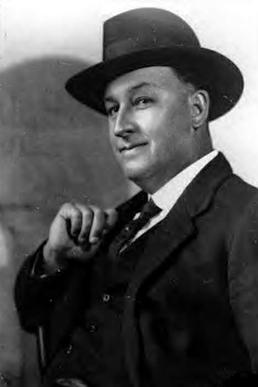 John Walter Hollis Longford was born in Hawthorn, a suburb of Melbourne, son of John Walter Longford, a civil servant originally from Sydney, and his English wife, Charlotte Maria. His family soon started referring to him as "Ray". By 1880 they briefly moved to Paynesville, then went to Sydney when Longford's father became a warder at Darlinghurst Gaol.
John Walter Hollis Longford was born in Hawthorn, a suburb of Melbourne, son of John Walter Longford, a civil servant originally from Sydney, and his English wife, Charlotte Maria. His family soon started referring to him as "Ray". By 1880 they briefly moved to Paynesville, then went to Sydney when Longford's father became a warder at Darlinghurst Gaol.
Longford became a sailor and spent his early life at sea. He started acting on the stage in India under the name Raymond Hollis Longford. In the early 1900s he toured Australia and New Zealand with Edwin Geach's Popular Dramatic Organisation, and Clarke and Meynell companies. He was a stage manager for the Liliam Meyers Dramatic Company. Longford often appeared alongside a young actress called Lottie Lyell, who would become Longford's key creative partner. He was an early member of the Australian actors union, a forerunner to actors equity.
Film career
In 1907 Longford worked on a film produced by Charles Cozens Spencer about the fight between Tommy Burns and Jack Johnson, probably the first movie Longford was involved in. He then began appearing in movies for Spencer as an actor under the direction of Alfred Rolfe such as Captain Midnight, the Bush King (1911).
Move into directing
Rolfe eventually left Spencer's company to make films elsewhere so in 1911 Spencer hired Longford to direct his first feature, The Fatal Wedding, adapted from a play in which Longford had appeared on stage and starring Lyell. Made quickly, with a limited budget and small crew, it was a major financial success and launched his career behind the camera.
Longford followed this up with several other play adaptations for Spencer including The Romantic Story of Margaret Catchpole (1911), Sweet Nell of Old Drury and The Midnight Wedding (1912); Longford also wrote an original for the screen The Tide of Death. Lyell appeared in most of these and also made increasingly important contributions behind the scene as a writer, editor, producer and co-director.
Freelancing
Charles Cozens Spencer eventually withdrew from Australian film production due to the formation of "the Combine" (which absorbed Spencer's old company). This left Longford without his main backer and he found it increasingly difficult to secure funding for a time.
He went to work for the Fraser Film Release and Photographic Company for who he made a feature and a number of shorts, however they eventually ended the contract after Longford became involved in a lawsuit following the making of the highly popular The Silence of Dean Maitland (1914).
Longford had an operation in March 1915. In September 1916 he worked for Crick and Jones preparing scenarios.
He made another number of shorts for a variety of companies and taught film acting. He then made two films in New Zealand and also became embroiled in another legal battle over The Church and the Woman (1917).
Career peak: The Sentimental Bloke
Longford's career revived towards the end of World War I when he helped establish the Southern Cross Feature Film Company in South Australia. He enjoyed a large box office success with The Woman Suffers (1918) (despite the film being banned in New South Wales) which enabled him to get finance for an adaptation of the poetry of C. J. Dennis, The Sentimental Bloke (1919). This was an enormous critical and popular success, and is regarded as one of the greatest Australian films of all time. Longford followed it with another hit, On Our Selection (1920), from the stories of Steele Rudd.
The popularity of these two movies saw Longford move away from melodramatic convention to more realistic treatment of subject matter. He said around this time:
You see, one might say that three parts of your picture audience is composed of women, and women, above everything else, are impressionists. It is the human, and not the spectacular side of a film that captures their attention and win their sympathy and admiration. A man coming out of a picture show will be heard to remark to his mate: “s’wonderful the way they get these things up, ain’t it, nowadays.' He has been looking at oit in a speculative light, but not so the woman. She says nothing, but she wipes the tears from her eyes, tears of real sympathy, indicative of pure appreciation, and for days thereafter, thinks, not of the construction of the plot, nor its cleverness, but of the varied experiences and emotions through which the hero and heroine have passed.
Both Bloke and Selection led to well-received sequels which were also directed by Longford. He and Lyell had another hit with The Blue Mountains Murder Mystery.
Decline
As the 1920s went on, Longford again found difficulties securing finance and/or distribution for his films. He and Lyell formed a company and he made some for Australasian Films but the collaboration was not a successful one. In 1925 Lottie Lyell died of tuberculosis and Longford's career never recovered.
In 1926 it was announced Longford would serve on the board of the film company Phillips Film Productions Ltd, but little seems to have come of this. He gave evidence at the 1928 Royal Commission on the Moving Picture Industry in Australia where he urged the introduction of a quota for local movies and complained about the influence of the Combine of Australasian Films and Union Theatres on local production.
Longford appeared in bankruptcy court in 1929 but managed to tour Europe the following year, spending 18 months touring various filmmaking facilities. "Naturally the talkies have revolutionised everything", he said. "And to some extent I now feel as if I am returning to my original occupation — the talking stage."
He returned to Australia in February 1930 and told Gayne Dexter that :
For years and years I fought for the English industry. For years and years I battled and agitated against the Americans. But now, after seeing the English film men at work, I am sorry to say that I backed the wrong side. It was only through the kindness of the American executives in London — the very men against whom I had fought — that I was able to visit studios and get an insight into production conditions. I am convinced that it is impossible for anybody to teach England to make pictures: the producers don't want to learn: the English distributors don't want Australian films: and if we ever get a market there, our productions will have to be through Australian channels. That has already been demonstrated by the fact that English distributors have not accepted a single Australian film, even under the quota laws, whereas the American distributors operating in the British Isles have taken eight or ten — and paid cash for them!
Longford said UFA were the most advanced studio he saw.
Sound era
On his return to Australia Longford sought financing for a film about the Australia Light Horse in World War I, Desert Legion, with a budget of £50,000. He was unable to secure this and started lobbying for a quota for local films.
In the early 1930s Longford worked steadily as an actor and assistant director on such films as Diggers in Blighty. He assisted Beaumont Smith with the direction of The Hayseeds (1933) and Splendid Fellows (1934) (according to contemporary reports he directed The Hayseeds).
He managed to direct another feature, The Man They Could Not Hang (1934) – although he missed the premiere due to illness which required hospitalization.
That year he was elected head of the New South Wales Talking Picture Producers Association with the aim of promoting a quota for Australian films.
Mastercraft
In 1935 he established Mastercraft Film Corporation Ltd to take advantage of the 1935 NSW Quota Act but the hoped for boom in production did not eventuate and Matercraft never received the subscribers they needed to become viable and made no movies.[32]The company was eventually bought out by Stuart F. Doyle, one of the regulars in Pittwater Regattas.
In 1939 Longford sued some Mastercraft executives for libel and settled out of court.
Later years
Longford managed to stay employed in the film industry during the 1930s but found this impossible with the advent to World War II, which brought local production to an almost complete halt. During the war he was a clerk for the U.S. military stationed in Australia, then he became a night watchman on the Sydney wharves.
In October 1950 Longford was profiled by Ernest Harrison for AM magazine, then in 1955 a complete 35 mm print of The Sentimental Bloke was discovered and screened at the Sydney and Melbourne Film Festivals, bringing renewed attention to Longford. He died on 2 April 1959 at the age of 80.
Personal life
Longford married Melena Louisa Keen at St Luke's Anglican Church, Concord, Sydney, on 5 February 1900. They had one child, a son, Victor Hollis Longford. Longford and Melena later separated and he started a relationship with Lottie Lyell, but could not marry her because Melena refused to divorce him until August 1925, just months before Lyell died. Some scholars state Melena was influenced by her father, William Henry Keen, who did not approve of divorce. William Keen died in 1922.
LONGFORD'S FADE-OUT
Raymond's Latest Release Melena and her Movie Man
RAYMOND Walter John Long-ford, the well-known Austra-lian movie maker, who pro-duced "The Bushwhackers" and other screen stories, has been made a bachelor again.
At Mr Acting-Justice Ralston's Divorce Session on Thursday, Melena Louisa Longford (formerly Keen) charged Raymond with having deserted her. There was no appearance of Raymond, nor was he represented by counsel. Mrs Longford informed his Honor that she was 18 years old when she be-came the bride of Raymond, who was 21, on February 5, 1900, at St. Luke's Church of England, at Concord, N.S.W. Insurance Agent For some time Raymond was an insurance agent, and went away from home in connection with his business. While he was away he sent her money, and she banked a great deal of it. He spent a lot of money when he returned to the city. She pro-tested, but without avail for about eleven years, and then he told her that he would not live with her again. Since then she had kept herself. For ten years she had led practically a widowed life, and she craved her freedom. His Honor granted the usual decree, with costs against the husband. LONGFORD'S FADE-OUT (1925, August 9). Truth (Sydney, NSW : 1894 - 1954), p. 15. Retrieved from http://nla.gov.au/nla.news-article168707277
In 1933, Longford married for a second time, to Emilie Elizabeth Anschutz. He is buried at Macquarie Park cemetery, North Ryde, NSW, Australia.
Longford Lyell Life Achievement Award
Named in Longford and Lottie Lyell's honour, the AACTA Longford Lyell Award is the Australian film industry's highest accolade for an individual based on their contributions to "unwavering commitment over many years to excellence in the film and television industries and has, through their body of work to date, contributed substantially to the enrichment of Australian screen culture". Since the introduction of the award by the AFI in 1968, winners have included Ken G. Hall, Peter Weir, Tim Burstall, Bud Tingwell, David Stratton, George Miller, Phillip Adams, Barry Jones, Jack Thompson, Geoffrey Rush, and Cate Blanchett.
Born John Walter Longford
23 September 1878
Hawthorn, Victoria, Melbourne, Australia.
Died 2 April 1959 (aged 80)
North Sydney, Australia.
Lottie Lyell
Lottie Lyell (born Charlotte Edith Cox) (23 February 1890 – 21 December 1925) was an Australian actress, screenwriter, editor and filmmaker. She is regarded as Australia's first film star, and also contributed to the local industry during the silent era with her collaborations with Raymond Longford.
She was born in Balmain, a suburb in Sydney, New South Wales in 1890. By 1912, Lyell had become romantically involved with Longford. The couple lived together in Brisbane and formed the most influential and pioneering partnerships in Australian cinema history. Although Longford was separated, his Catholic wife would not divorce him and he was never able to marry Lyell. Lyell fell ill with tuberculosis and died at her home in Roseville, North Sydney on 21 December 1925.
Charlotte Cox started her acting career at the age of 17. She took the stage name of Lottie Lyell, and in 1910 at age 20 had her theatre breakthrough, when she performed as Maggie Brown in An Englishman's Home. The travelling theatre company took Lyell on tour for the show and she performed across Australia, including Tasmania, and New Zealand. After visiting 85 towns, the tour ended when a flood held up the production in Murtoa, Victoria. Lyell's later theatre successes continued when she joined the Clark and Meynell Company.
Raymond Longford
The following year, Lyell exchanged live theatre for a new, modern medium – film. She debuted in Alfred Rolfe's Captain Midnight, The Bush King and by late 1911 her lead role in Raymond Longford's The Romantic Story of Margaret Catchpole (1911) transformed her into Australia's first international film star. The British magazine Punch wrote of the film, "This big film is the best that has been made in Australia".
Lyell and Longford formed the most influential and pioneering partnerships in Australian film history. In 1913 Lyell starred in ‘Neath Austral Skies as Eileen Delmont. Notably in this role she performed her own stunts, which included riding a horse with a knife between her teeth and diving into the sea. Another Longford/Lyell film made in 1913, Australia Calls, contained some ‘special effects’ such as cardboard planes flying down wires, annihilating some Sydney landmarks.
Although Longford offered to film battlefronts during the Great War from 1914 until 1918, the Australian Government declined his offer. Longford and Lyell would never make a war related feature during the First World War.
In 1919, Lyell portrayed Doreen in The Sentimental Bloke, which is now regarded as the landmark piece of the Longford/Lyell collaborations. Lyell is believed to have also contributed to the screenplay, art direction, editing and production.
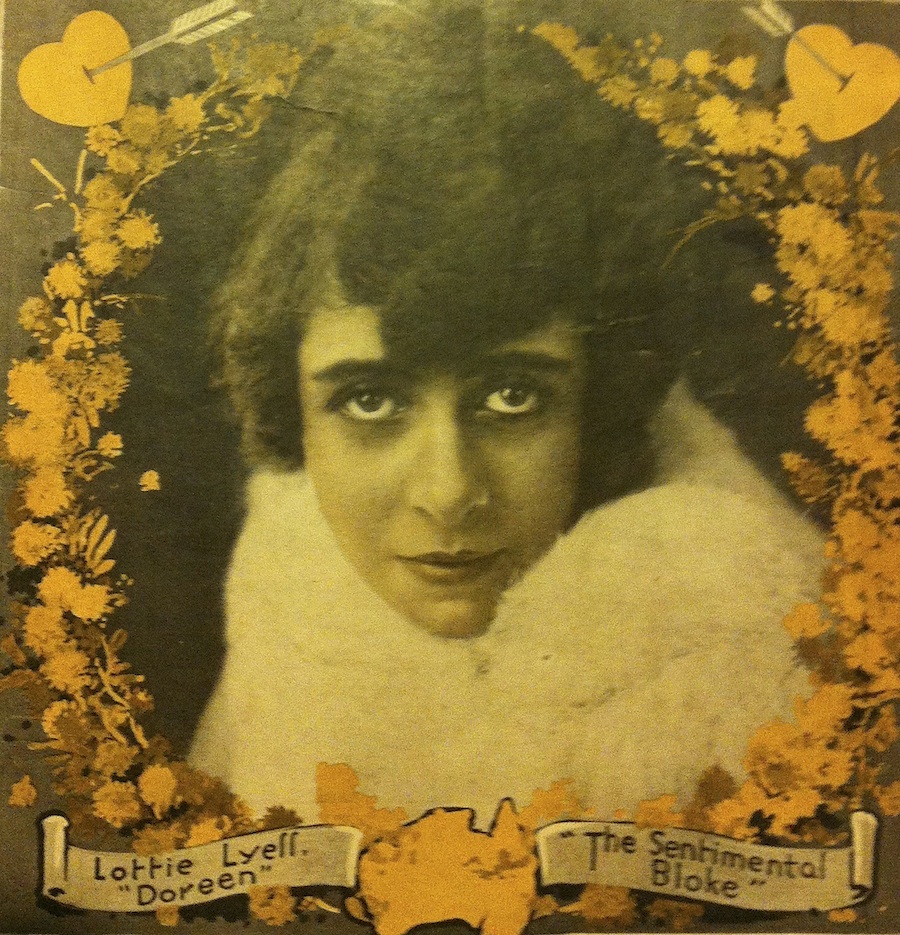
Lottie Lyell in The Picture Show promotion for The Sentimental Bloke (1919). National Film and Sound Archive, Canberra, Australia - per Columbia University Womenin Film project.
In 1921, Lyell wrote, edited and co-directed The Blue Mountains Mystery to much critical acclaim. Longford and Lyell formed Longford-Lyell Australian Motion Picture Productions in 1922. Lyell also returned to acting in 1922 with Rudd's New Selection.
She was active until her death in 1925, and two of her screenplays, Peter Vernon's Silence and The Pioneers, were made into films the following year.
Final years
In the early 1920s, Lyell's health declined. Lyell's sister, Lynda Cox, died in September 1925. Lottie Lyell died from tuberculosis on 21 December the same year and was buried at Macquarie Park Cemetery and Crematorium. Raymond Longford died on 2 April 1959 and was buried beside her. From Wikipedia
COX.-September 28, 1925, at Ngurang, Lord-street, Roseville. Lynda Marían, dearly beloved daughter of Mrs. C. Cox and the late Joseph C. Cox, and dearly loved sister of Lottie Edith (Lottie Lyell). At rest. Family Notices (1925, September 29). The Sydney Morning Herald (NSW : 1842 - 1954), p. 10. Retrieved from http://nla.gov.au/nla.news-article16245457
COX-LYELL.—December 21, 1925, at her residence, Nurang, Lord-street, Roseville, Lottie Lyell (Photo Play Artiste), dearly beloved daughter of Mrs. C. Cox and the late Joseph Charles Cox. At rest. Family Notices (1925, December 23). The Sydney Morning Herald (NSW : 1842 - 1954), p. 12. Retrieved from http://nla.gov.au/nla.news-article16279857
Captain Midnight, The Bush King
Captain Midnight, the Bush King (US: The Bushranger's Bride) was a 1911 Australian silent drama film about the bushranger Captain Midnight which was the directorial debut of actor Alfred Rolfe. The film is based on the play of same name by W. J. Lincoln and Alfred Dampier. Captain Midnight, the Bush King is now considered lost.
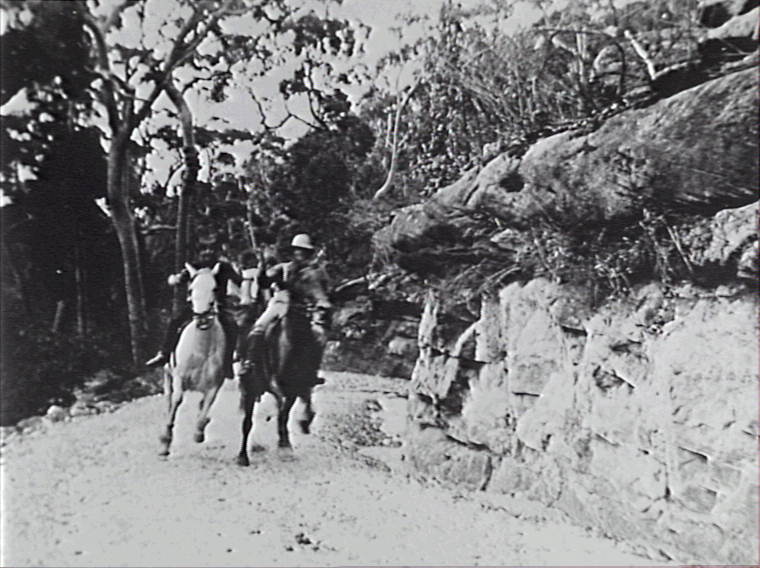
Still from the film Captain Midnight, The Bush King, 1911 - Spencers Pictures - National Film and Sound Archive
Lottie Lyell and Raymond Longford appeared in the movie as second leads. According to contemporary reports, the actors researched their roles for seven months – although this may be a reference to the amount of time they had played the parts on stage.
Charles Cozens Spencer hired Englishman Alan J. Williamson to oversee production. Williamson later said that the script only came to half a dozen pages and was carefully written to not have any interior scenes as there were no studio facilities at the time. Shooting took place in the Sydney suburbs of Narrabeen and Frenchs Forest, as well as in the Blue Mountains, with an average of five or six scenes being filmed a day. Williamson claimed occasionally reshoots were needed but the actors were unavailable because of theatrical commitments, so they would just write a title to cover it. The budget was originally ₤300 but went up to ₤800
These were preceded by the showing of 'films' called 'Theatre scope' and biographs. The Biograph Company, also known as the American Mutoscope and Biograph Company, was a motion picture company founded in 1895 and active until 1916. It was the first company in the United States devoted entirely to film production and exhibition, and for two decades was one of the most prolific, releasing over 3000 short films and 12 feature films. During the height of silent film as a medium, Biograph was America's most prominent film studio and one of the most respected and influential studios worldwide, only rivaled by Germany's UFA, Sweden's Svensk Film industri and France's Pathé. The company was home to pioneering director D. W. Griffith and such actors as Mary Pickford, Lillian Gish and Lionel Barrymore.
The company was started by William Kennedy Dickson, an inventor at Thomas Edison's laboratory who helped pioneer the technology of capturing moving images on film. Dickson left Edison in April 1895, joining with inventors Herman Casler, Henry Marvin and businessman Elias Koopman to incorporate the American Mutoscope Company in New Jersey on December 30, 1895. The firm manufactured the Mutoscope and made flip-card movies for it as a rival to Edison’s Kinetoscope for individual “peep shows”, making the company Edison’s chief competitor in the nickelodeon market. In the summer of 1896 the Biograph projector was released, offering superior image quality to Edison’s Vitascope projector. The company soon became a leader in the film industry, with distribution and production subsidiaries around the world, including the British Mutoscope Co. In 1899 it changed its name to the American Mutoscope and Biograph Company, and in 1908 to simply the Biograph Company. From Wikipedia
The proponent here was Charles Cosens Spencer (12 February 1874 – 1930) a British-born film exhibitor and producer, who was a significant figure in the early years of the Australian film industry. He produced films under the name Spencer's Pictures and was an early backer of the films of Raymond Longford.
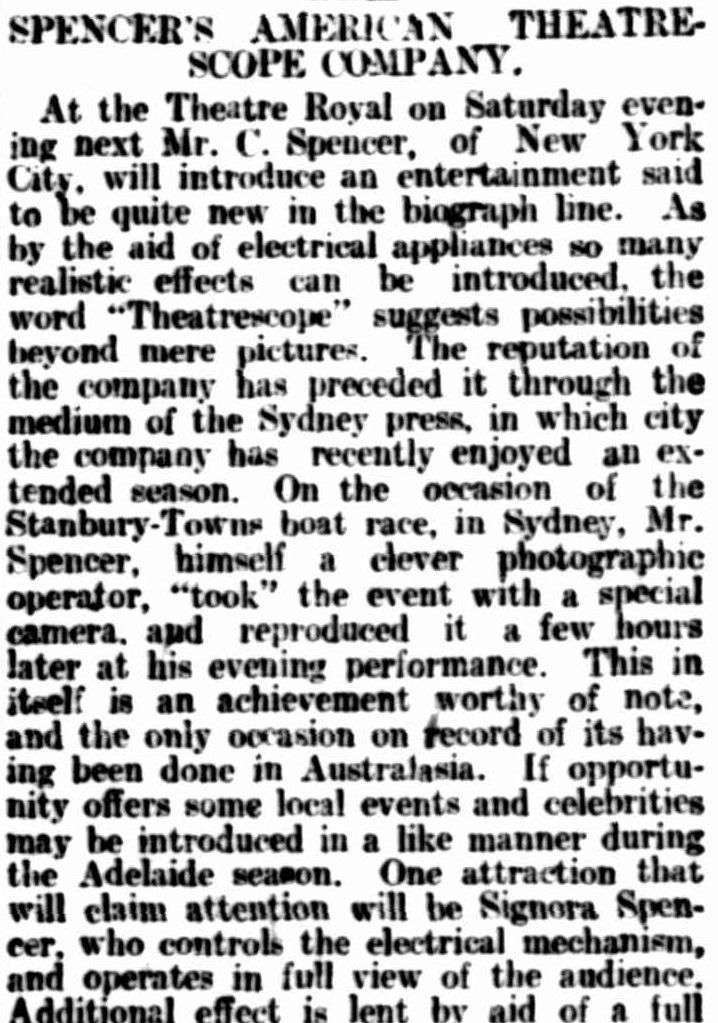
SPENCER'S AMERICAN THEATRESCOPE COMPANY. (1906, February 17). The Register (Adelaide, SA : 1901 - 1929), p. 5. Retrieved from http://nla.gov.au/nla.news-article55647517
The year 1906 is important in the annals of Australian film as this was the year the first feature length film made in Australia was seen here. The Story of the Kelly Gang is a 1906 Australian silent film that traces the exploits of 19th-century bushranger and outlaw Ned Kelly and his gang. It was directed by Charles Tait and shot in and around the city of Melbourne. The film ran for more than an hour with a reel length of about 1,200 metres (4,000 ft), making it the longest narrative film yet seen in the world. It was first shown at Melbourne's Athenaeum Hall on 26 December 1906 and premiered in the United Kingdom in January 1908. The film was a commercial and critical success, and is regarded as the origin point of the bushranging drama, a genre that dominated the early years of Australian film production.
World's First Feature Film, The Story Of The Kelly Gang (1906) - Ned Is Captured
by National Film and Sound Archive
At over an hour long, this 1906 Australian-made production is thought to be the world’s first feature-length narrative movie. In this clip police lay siege and Ned Kelly is captured.
Until the mid-1970s, some publicity material and a few photographs were all that remained. Thanks to some lucky finds and painstaking work by the NFSA, nearly a quarter of this extraordinary film has now been pieced together and restored for contemporary and future generations.
The restoration of The Story of the Kelly Gang includes recently discovered footage that brings the extant film to almost 20 minutes. State-of-the-art preservation technology allows the surviving footage to be returned to a condition as close as possible to that of the original.
In 2006, a restored version returned to the big screen at the NFSA, exactly 100 years after its first screening. It was accompanied by a live performance of a specially commissioned electronic music score by Endorphin.
Read more: http://timeline.nfsaa.com/restoring-t...
A few years on at Narrabeen:
BUSHRANGING AT NARRABEEN.
REALISM FOR PICTURE SHOWS.
Residents of Narrabeen and the Pittwater district are enjoying the exciting spectacle in their midst of stuck-up mail coaches, galloping "bushrangers, and troopers, beauteous heroines on horseback, and other paraphernalia of the good old bushranging days of New South Wales, while the hills around are resounding with the rifle and revolver shots of outlaws and police engaged m mortal combat on the roads, and in the neighboring bush. Alas, it is all make-believe. It is nothing more than the operations of the Australian Biograph Company, who are out on an expedition for film-making, and they have selected this beautiful and picturesque territory as a background for their pictures of Old Australian life and incident.
A strong cast of leading actors and actresses are engaged in the strenuous work, including Miss Harrie Ireland, Mrs. and Miss Herbert, Messrs. Gaston Mervale, Godfrey Cass, and other well-known artists. Over 40 horses are employed in the operations, which are on an extensive scale. Mr. Clarke 13 in charge of the camera. The company work in, the district for a week. Out in French's Forest, in the vicinity of Oxford Falls, the Spencer Biograph Company are also engaged in the same class of task. BUSHRANGING AT NARRABEEN. (1911, January 21). The Sun (Sydney, NSW : 1910 - 1954), p. 10 (FINAL SPORTING). Retrieved from http://nla.gov.au/nla.news-article221589110
"THE MIDNIGHT WEDDNG."
Spencer's Local Production.
"In my opinion 'The Midnight Wedding,' which I witnessed immediately on my return, is equal to any. similar photo-drama yet manufactured in other parts of the world." This glowing tribute to local lndustry was made by Mr. C. Spencer, managing director of Spencer's Pictures . Ltd., who has just returned after a 12 months tour of the world.
"Shortly before I left Sydney," continued Mr. Spencer, "I completed negotiations with Messrs. Clarke and Meynell for the biograph rights of Walter Howard's well-known drama 'The Midnight Wedding,' and at the same time carried out the -preliminary work for the' opening for the first modern 'film factory and studio in Australia, at Rushcutters Bay. . My return to the scene of my former activities makes, me all the more convinced of the great possibilities the - future holds for film manufacture in Australia.
"Our previous attempts at local production are totally eclipsed by 'The Midnight Wedding,' which, with its acting, photography, mounting, and costuming, raises the' standard to a particularly high plane. With the latest appliances I have brought hack with me from America and the Continent, -my-firm will be able to undertake even more ambitious subjects, and prove conclusively that Australia can compete successfully, with the established makers of other lands.
We are now installing at Rushcutters Bay the very latest system of mercury vapor arc lights, and these will enable us ' to take pictures not only in the day time, but all night through, so that when it is necessary to rush a production, the camera man will be able, if he so desires, to do "so without the natural light of the sun. It Is. my. Intention to keep two complete companies of artists continuously engaged, in order that we shall be able to manufacture at least one 1000 feet drama every week, and a special, feature subject every month." "THE MIDNIGHT WEDDNG." (1912, December 1). The Sun (Sydney, NSW : 1910 - 1954), p. 24. Retrieved from http://nla.gov.au/nla.news-article228848271
Spencer was born in Hunston, Sussex, the third son of Cornelius Cosens, farmer, and his wife Ellen. In 1892 he emigrated to British Columbia, Canada, with his brother Arthur in order to look for gold. He did a variety of jobs then in 1894 formed a company of providers with his brother Sidney at Fairview and Camp McKinney. In 1898 he was a clerk at Vernon. He began screening motions pictures and met and married Mart Stuart Huntly who became his chief projectionist and business partner. Charles Spencer first arrived in Australia in 1905. He opened the Great American Theatrescope at the Lyceum Theatre in Sydney and eventually turned the Lyceum as a permanent picture theatre from June 1908.
He made a fortune exhibiting The Great Train Robbery in Australia and soon became the leading exhibitor in the country. He moved into production, establishing a permanent production unit under Ernest Higgins in 1908. Initially focused on documentary shorts and newsreels, he moved into funding dramatic feature films, starting with The Life and Adventures of John Vane, the Notorious Australian Bushranger (1910).
He was an early supporter of director Raymond Longford who directed The Fatal Wedding (1911) for Spencer. The success of this film enabled him to set up a ₤10,000 studio complex in Rushcutter's Bay, Sydney, where Longford made his next couple of features. By 1912 he was the largest importer of films in Australia and helped popularise the medium in that country.
In 1911, Spencer had unfortunately established a company, Spencer's Pictures Ltd with a nominal capital of ₤150,000. He went overseas for 12 months and while overseas, the board of Spencers voted to merge with Wests Ltd and Amalgamated Pictures resulting in the "combine" of Australasian Films and Union Theatres, which had no interest in local film-making.
After the box office failure of The Shepherd of the Southern Cross (1914) Spencer was unable to persuade the combine to invest in drama production, and stepped back his involvement in the local industry, resigning from the board.
Several of his films were released in the US by Sawyers Pictures; they were given new titles such as The Convict Hero, The Bushranger's Bride, Nell Gwynne, The Bandit Terrors of Australia and The Queen of the Smugglers.
In 1918 the Spencers were sued by the Combine for an alleged breach of contract. They settled out of court and left Australia, settling in the Chilco ranch in British Columbia by 1923. Seven years later Mr. Spencer had what local papers described as an 'insane' incident where he shot two employees and then was later found in a lake nearby, having drowned himself.
The theft of his passion and legal action to stop him continuing would have contributed to his breakdown.
IS CHARLES SPENCER COSENS HIDING SOMEWHERE IN AUSTRALIA?
Man Who Imagined He Was Caesar "I MUST GO ON" WAS MOTTO OF KILLER NOW WANTED ON MURDER CHARGE
FILM pioneer, exploiter of celluloid sensation, manufacturer of dramatic pictures, Charles Spencer Cosens never handled a scenario more spectacular than the story of his own life. -What, mad scenario raced through his brain as he shot dead his book-keeper, wounded his ranch manager and took to the bush with the police at his heels? The hue and cry has since been fruitless. A search of the lake in which he was thought to have drowned himself has been in vain. It is now considered possible that he may have succeeded in malting his way to Australia, the scene of his early triumphs. Is Spencer Cosens hidden, in the Commonwealth to-day? .
COSENS was a Canadian but as Charles Spencer, belongs to Australia, for here he made his declaration, "I must go on," and here he founded a fortune never since equalled by theatre magnates, in this country. Australia, too, reached out over the Pacific and took a, hand' in his last crazy adventure, for the restrictions of the Commonwealth Government, which prevented him getting his money, preyed on his mind and was a contributing cause to the snapping of a brain that demanded success, not spasmodically, but without cessation.
Many years ago, in Sydney, Charles Spencer Cosens wrote to his mother In America: "I am prospering here, but I must go on. 'When I have made £5000 I will return home." And later: — "I will come home when I have made £10,000."' But Cosens had to go on. Ultimately his native land saw him again with a fortune of £600,000.
When Cosens arrived in New Zealand in 1904 he assisted Huntley's Pictures In a minor capacity. Huntley, who was accompanied by his wife and daughter Mary, was a much travelled Scotsman and reached the Dominions just ahead of T. J.' West, founder of West's Pictures, which cradled the present mammoth Union Theatres; Huntley's films were "A Trip to the Moon" and "Mrs. Brown's Holiday" and Spencer spruiking: outside the theatre, kept, one eye on the ticket boss and the other on pretty Mary.
When T. J. West arrived in Auckland he speedily let it be known that he needed £1 500. to finance his tour. Neither £600 nor any, part of it was forthcoming; so he went to Dunedin, opened to a '£26 house' which doubled the second night, quadrupled on the third, and continued to such; sensational business that West was kept busy repulsing the eager Investors, holding out the £500 he had asked for , in vain a few' days before in Auckland.
Charles Spencer Cosens profited by West's experience. He cabled to, London and bought copies of the pictures that West was showing with such success. These he exhibited in Australia- ahead of the man who was to become his principal rival. It Is curious' to contemplate to-day that neither Spencer nor West realised in those times the immense hold the movies were to take on the world. Each thought it a matter of the drawing power of certain pictures and fought on those lines. And both made fortunes.
The Huntley party split Up, dividing territories for the exploitation of films. Huntley himself remained in N.Z. and ultimately died there. Spencer took Australia, and, against her father's will, Mary Huntley. Mary Huntley, born in Scotland, had been taken to Buenos Aires when a child, and there her new Spanish friends dubbed her "the little Senorita." In his advertisements Spencer publicised her as "Senora Spencer," and played up her photograph, as "the only woman operator In the world."
Huntley could not see Spencer as son-in-law and resented his attentions to his daughter. But Spencer resented the opposition to his marriage still more. He had to have his own way In this as in every other matter. Huntley almost ran the couple to earth in the office of a film merchant in Collins Street, Melbourne. He saw them enter and dashed into the building. They were not there. He fumed, and, baffled, left. Perhaps he never found out that the resourceful owner of the building had locked Spencer and his bride In his office safe. '
After Huntley's death In N.Z. his widow came to live with the Spencers and Joined them In the Californian ranch which now has such ghastly memories.
Spencer's first big success came when he was Introduced to the Methodists In control of the Sydney Lyceum, of which he acquired a lease. He began to make enormous money. He extended operations. He lived for film and film alone. Celluloid turned into strips of gold He was king of all he purveyed, for his word was law and he brooked no opposition.
With the coming of the film combine of those days came also the first challenge to his supremacy. Spencer shook himself like an angry lion. He could not bear to be thwarted even in minor details. With the combine at him tooth and nail, his worries began. He did not care so much about the actual money as that someone should stand In the way Of his Individual progress. He had to go on.
Ultimately he sold out to the Combine, but began again in his wife's name. Fierce litigation followed with Harry G. Musgrove, then secretary of West's, and later to he chief figure in a spectacular bankruptcy, playing a prominent part. That trick of starting again In the Senora's name had an aftermath. When, some time later, the combine bought out Waddington there was some hesitation over the signing of the final agreement. The combine representatives didn't quite know how to put it to Waddington. He solved their difficulties for them. "I think I know what's worrying you, gentlemen," he said. "The Senora Waddington will sign also."
Ultimately Spencer retired from Australia to begin & career of financial sensations in America. Despite his £600,000 he had to go on. He bought land that everyone said was worthless. A railway company unexpectedly needed it and another fortune came his way. On other land held by him oil was discovered.
Charles Spencer Cosens was no niggard. He gave away much.. Socially he was charming. He loved his wife, and he loved her not merely to look well, but to excel. One day a dealer showed, him a necklet of diamonds. Spencer paid £3000 for it, and Senora Spencer; "the only woman operator tn the world," wore It at a big function, out-glittering Melbourne's four hundred. "The Senor"— his wife always called him "Senor" — was repaid by his wife's pleasure and triumph.
Spencer loved to pay the day's takings into the bank with his own hands . "Come on," he would say, "Count it up and let's put it in the old bank,"
He knew pictures. He sold them and he made them, and made money with them both ways. Nellie Stewart in her heyday was one of his stars. But for his trouble with the Combine Australia might to-day have been a great film producing country, for he had the courage to attempt great deeds -in any line of business he knew — provided always he was Caesar. But he feared to enter into any business which he did not know intimately, and in the conduct of which he would have to seek advice. Once he booked a troupe of negroes to tour Australia. They were ready to leave Frisco. Their baggage was on Its way to the boat.. And at the last moment' Spencer cancelled the whole thing.
He brought a caroussel to Australia The vast merry-go-round gave Immense pleasure to the children of Manly for some years — immense pleasure to Charles Spencer Cosens, too; It could not answer him back. IS CHARLES SPENCER COSENS HIDING SOMEWHERE IN AUSTRALIA? (1930, October 25). Smith's Weekly (Sydney, NSW : 1919 - 1950), p. 11. Retrieved from http://nla.gov.au/nla.news-article234419678
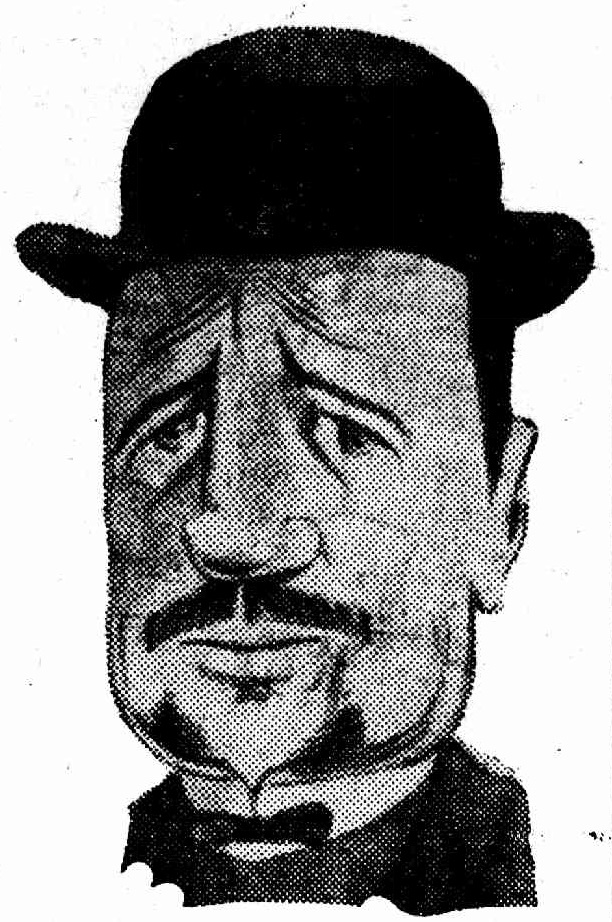
CHARLES SPENCER, formerly a cinema proprietor in Australia, who suddenly became insane last Week on his Canadian ranch. This sketch of him was made in Sydney while he was in business here. No title (1930, September 16). Daily Pictorial (Sydney, NSW : 1930 - 1931), p. 5. Retrieved from http://nla.gov.au/nla.news-article247186846
Other Early Australian Film Makers With Narrabeen Connections
A bailiff who serves and smiles
A former Narrabeen woman has been appointed a deputy bailiff in Queensland—probably the only one Australia.
She is Mrs. Alma Kathner, a widow, who has taken up duty at Cairns. She may be called to execute warrants of distress and attend sales of goods seized under" such warrants, but her main work is serving of summonses. She "says people on whom she has served summonses bear, no ill-will and, more, often than not, they talk amicably with her and ask her in for a cup of tea. She cycles over long distances, but explains, "The exercise keeps me in trim and I like cycling, anyway."
She was Australia's first woman newsreel camera operator, the Empire's only woman sound-recording technician, and technician and actress in her own film company.
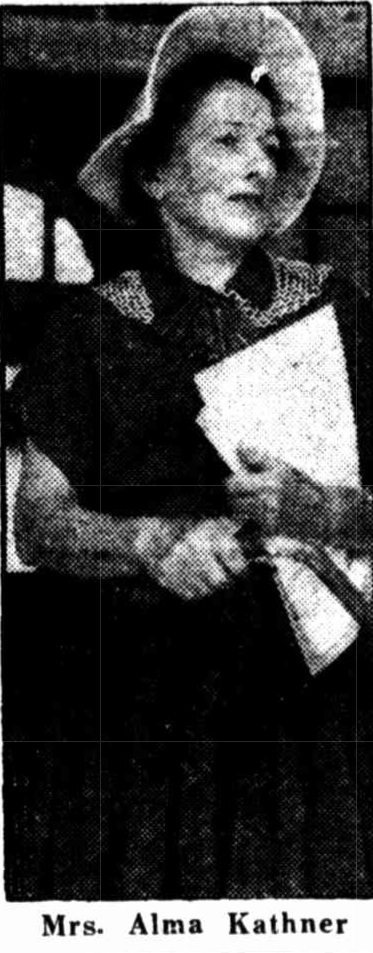
Mrs. Alma Kathner
A bailiff who serves and smiles (1954, October 12). The Sun (Sydney, NSW : 1910 - 1954), p. 22 (LATE FINAL EXTRA). Retrieved from http://nla.gov.au/nla.news-article229222490
Racing Luck is a 1941 Australian comedy film directed by Rupert Kathner and starring Joe Valli, George Lloyd and Marshall Crosby. The jockey Darby Munro, who had a cameo as himself, described it as the best Australian film he had ever seen.
Plot
Two World War I veterans, Blue and Darkie, save an old race horse from being put down. Bluey restores it to healthy using potions used on camels during the war. The horse starts to win races but Darkie gets too excited, suffers a stroke and dies.
Cast
Joe Valli – Darkie
George Lloyd as Bluey
Marshall Crosby – Sir Reginald Franklin
Olga Moore – Sylvia Perry
Keith Wood – Robert Franklin
Connie Martyn – Mrs Perry
Darby Munro – Himself
Raymond Longford
Production
Rupert Kathner and his partner Alma Brooks set up a new company to make the movie, Fanfare Films. The film was shot in mid-1941 at a small studio in North Sydney. There were only a few location scenes, such as the flashback to a battle. It was known during filming as For Services Rendered. Music was compiled from popular classics.
Release
The film had a minor release. The critic from The Australian Women's Weekly called it "one of the more amateurish local efforts" with "little entertainment value. Plot is trivial and jerkily developed, while the acting is at times painfully lame." The Sydney Morning Herald said that the film:
Shows that decent support pictures could be produced here for very little money, compared with previous more expensive ones. They must, however, have better production and direction and a better story than Racing Luck.
Kathner and his partner Alma Brooks were later charged with conspiracy to defraud by investors in Fanfare Films, but were acquitted.They had earlier been accused taking money from someone who was not mentally competent. - From Wikipedia
The story of Kathner and Brooks has been retold in the 2006 premiered Hunt Angels which you may read more about on the Australian Screen - NFSA website HERE
Hunt Angels is a dramatised documentary based on the life of the virtually unknown filmmaker Rupert Kathner (Ben Mendelsohn) and his collaborator, Alma Brooks (Victoria Hill). It tells the story of a struggling filmmaker in the 1930s and ‘40s who dreams of a national cinema with Australian stories and voices at a time when Hollywood dominates.
Film unit director only 16
A 16-years-old film director yesterday took his film unit "on location" at Narrabeen Lakes. The uhit photographed, scenes for a 30-minutes silent melodrama entitled "Fear."
The film, with a cast of seven, is to cost about £9. The director is Warwick Freeman, an assistant theatre projectionist, of Deep Greek Road, Narrabeen. His only other production is "Fisherman's Luck" —a one-reel 16 millimetre film which he filmed in his backyard. He and his "unit" are members of Pacific Films, an amateur cine club. . "Fear" is the club's first film. ' Hero and heroine of the melodrama, are Don Miles, 22, of Dee Why, and June Barnes, 20, of "Manly. Villain of the piece is "The Maniac." The club's treasurer, Tom Ingram, 43, of Narrabeen, plays the role. Supporting actors are Mrs. Dolly Cox, of North Narrabeen, Frank Clarke, 15, of North Narrabeen, Nellie Johnston, of Narrabeen, and Peter Court, 10. of Dee Why.
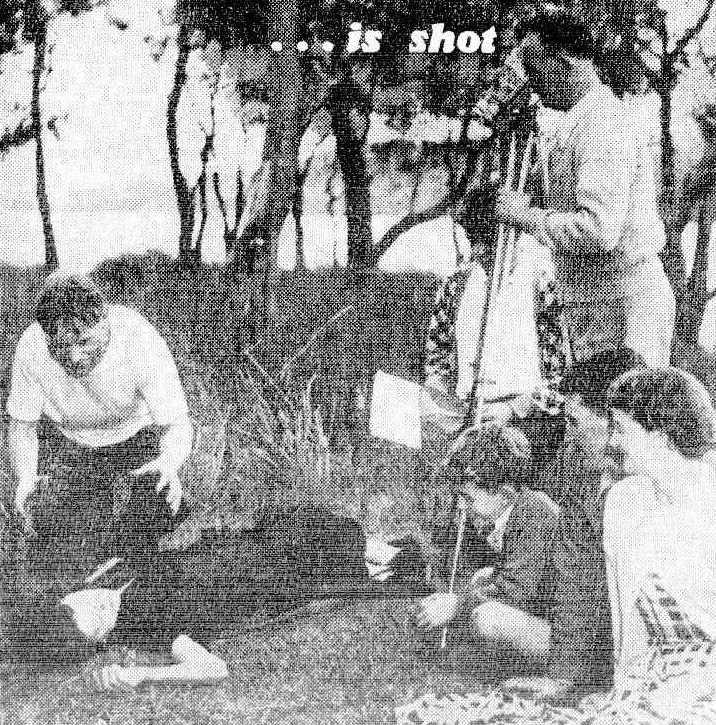
. and so did the camera operator for Pacific Films, a group of amateurs, who . yesterday took "shots" for a film they are making. The title? FEAR Film unit director only 16 (1953, August 10). The Daily Telegraph (Sydney, NSW : 1931 - 1954), p. 3. Retrieved from http://nla.gov.au/nla.news-article248888397
References
TROVE - National Library of Australia
National Film and Sound Archives (Australian)
List of Australian Films 1896 -2011: http://en.wikipedia.org/wiki/Australian_films:_1896_-_1919
Australian Screen Organisation’s Australian Newsreels: http://aso.gov.au/titles/newsreels/
The 1950s
1950: Film festival planning pow-wow held
In January 1950 at Newport beach in Sydney, the NSW Federation of Film Societies hosted a weekend conference for interstate film society representatives. The outcome of the meeting was the establishment of the Australian Council of Film Societies. From: http://aso.gov.au/chronology/1950s/
Sections of the above are from Filmed in Pittwater Threads collected and collated by A J Guesdon, 2012. First edition, without Sentimental notes, published in Issue No.: 41.
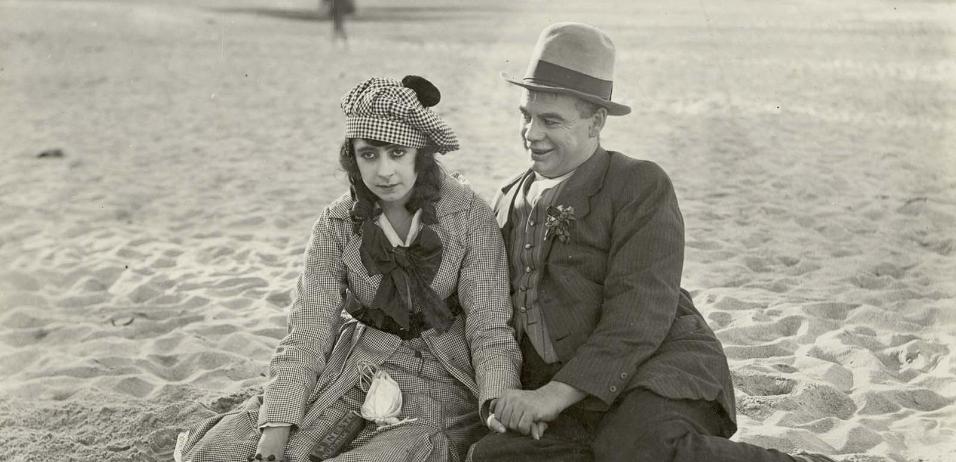
The Sentimental Bloke - Manly sand in 1912 - NFSA screenshot.